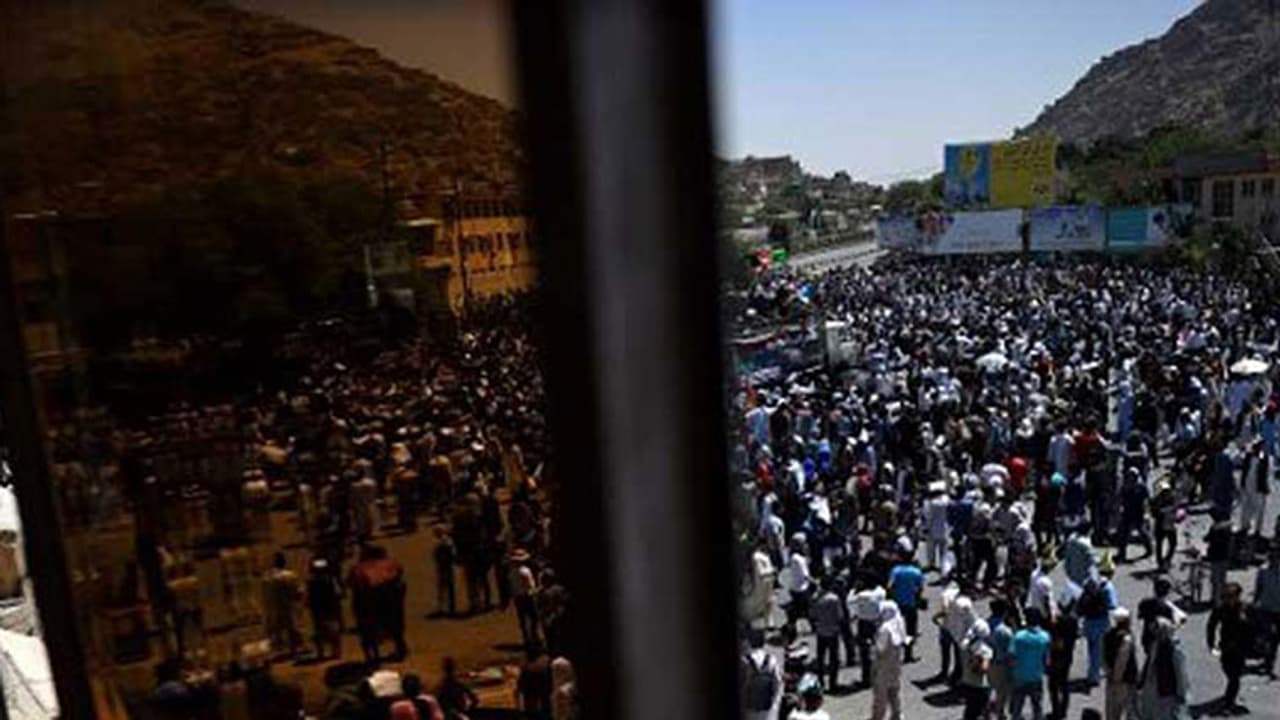- Indian media was slow and tentative in the coverage of the latest massacre of Hazaras- Indian media has never really had bureaus in Kabul (even though India has about four consulates in Afghanistan)- Indian media has no appetite for foreign news neither an understanding
Rows of 20 or more closely dug graves accommodating scores of dead bodies in Kabul; in the procession of an endless war, this is the latest mourning. Eighty dead and as many as 230 injured mostly from the ethnic minority community of the Hazaras. Of Mongolian and Central Asian descent, they had gathered to protest over a major power transmission line bypassing Bamiyan where Hazaras mainly reside.

First targeted by the Taliban and this time by the Islamic State that has claimed to have carried out the strikes because of their Shiite/Shia beliefs. If the claims are true, then this marks the first ISIS attack in Afghanistan/Kabul and should worry Pakistan and India. ISIS influence in Afghanistan has mostly been concentrated in its eastern region.
The Kabul attack is one of the deadliest is several years and could see the beginning of another phase of sectarian violence that suits ISIS. A year and a half ago the United States and Allied Forces lowered the flag at military headquarters in Kabul handing over combat to Afghan forces. The US officially ended the longest war in American history. Ironically the war is still raging. The UN Special Envoy in Afghanistan Nicholas Haysom while briefing the UN Security Council said if Afghanistan merely survives 2016 the UN would consider it a success.
Civilian casualties in the country reached a new high with 1,601 killed in the first six months of this year and as many as 3600 injured, says the UN. One-third of the victims are children, a violent indicator of the reality that the world prefers to ignore.
But the Indian media was slow and tentative in the coverage of the latest massacre of Hazaras. Not the way they reported Dhaka or Nice or Istanbul or Orlando. Why?
Indian media has never really had bureaus in Kabul (even though India has about four consulates in Afghanistan) and while trends in that country directly affect India, the media has traditionally depended on Western sources for its coverage of South Asia and South East Asia.
How much of South Asia do we really cover? The media has never really engaged with this issue but something that stares at our face all the time. While chairing a panel on this topic at Delhi’s India International Centre earlier this year, I was joined by foreign correspondents, diplomats and the civil society. Unfortunately most were from India with a few exceptions from some SAARC countries.
Despite the fact that a quarter of the world's population resides in South Asia the coverage is shamefully skewed. Though it is easy to get professionally seduced by the exotica of South Asia, the coverage as we all know is largely disaster and crisis-driven. Remember Nepal earthquake? But we have never had a bureau there or a retainer. After LTTE, Sri Lanka has fallen off the map too. The Rohingya story from Myanmar had no ground reports at all. Dhaka hostage crisis was too dramatic to not cover, but the serial machete killing in Bangladesh took a long time to even get any attention. Further, whatever is covered or reported is usually by the Western press and wire agencies as if Asia has no voice of its own. Development reporting, for example, doesn't even exist anywhere in the region.
There is virtually no coverage of South Asia except for Pakistan that also ends up as talking heads in noisy television studios. There is an acute lack of ground reportage and understanding of each other. How many of us have even travelled the SAARC countries really? How much do we teach about our neighbourhood to the younger generation? It was also true that the media has been interested only in the 'bad' news happening in our neighbourhood, and that stereotypes the places and people.
Clearly, Indian media has no appetite for foreign news neither an understanding. The readers and viewers must expect more from journalists. They must demand more from us. Let’s nor forget that if Indian media pays little attention and devotes even lesser space to its neighbours, the other countries have nothing at all in their respective media about their own region.
Circulation of newspapers, collaborations and opening up visa regime could probably improve South Asia coverage. It is of urgent need that we start covering this region honestly and go back to the ground. If countries like Afghanistan are ‘merely surviving’ then we have the responsibility to tell that story.
Kishalay Bhattacharjee is a senior journalist and author. His most recent book is Blood on my Hands: Confessions of Staged Encounters (Harper Collins 2015). The views expressed here are his own.
